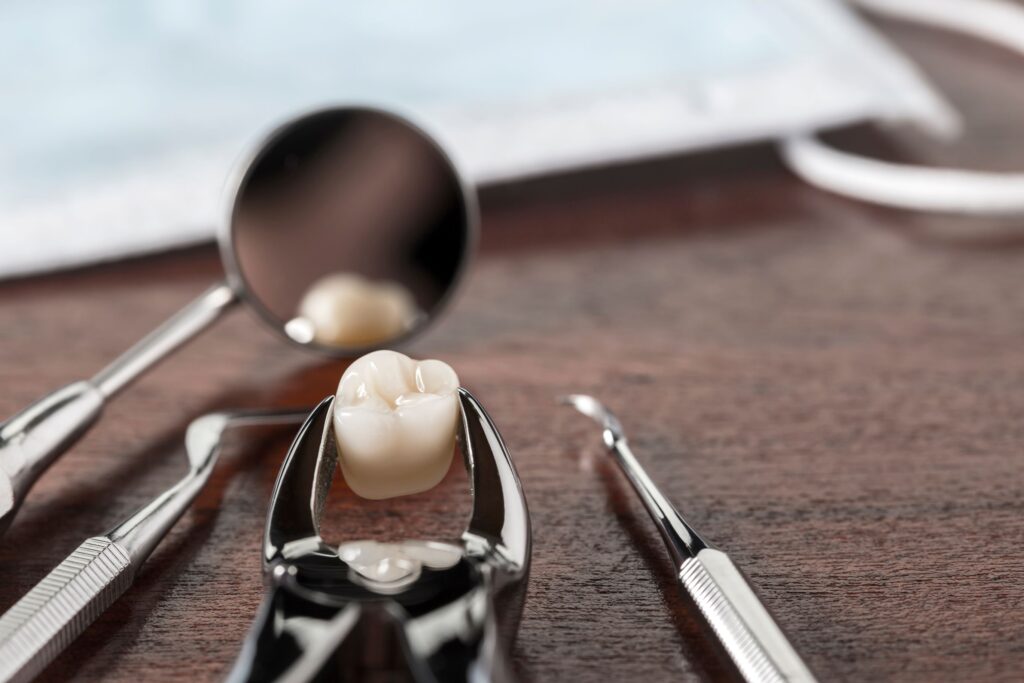Removal Ready: What to Expect from a Tooth Extraction
October 7, 2024

If your dentist just told you that they need to extract one or more of your teeth, it’s natural to have questions. You might worry about how long the procedure takes or whether it’s going to hurt. Unfortunately, some patients feel so anxious about having a tooth removed that they hesitate to schedule the procedure, which can harm their dental health.
Understanding what happens during your tooth extraction and what it feels like can help put your mind at ease and help you move forward confidently. Keep reading to learn more about what to expect from your upcoming appointment so you can set your fears aside!
Why Do I Need a Tooth Extraction?
It’s normal to question the necessity of having your tooth removed, especially if you think there’s a chance a simpler treatment might fix the issue. It depends on your unique circumstances, but usually if your dentist has recommended an extraction, it’s because there are no other viable treatment options.
Your provider might have suggested this procedure for several reasons, including:
- Decay or damage that’s harmed the structure of your tooth so much that it cannot be effectively repaired with a filling, root canal, dental crown, or other service.
- Wisdom teeth are impacted, infected, or pushing neighboring teeth out of alignment as they arrive.
- Dental crowding due to a jaw that is too small to support all of your teeth safely.
What Happens During a Tooth Extraction?
Many people’s biggest concern about dental extractions is how much pain they might feel. Before beginning your procedure, your dentist will apply a local anesthetic around your troublesome tooth to numb the area and keep you comfortable. Then, depending on the severity of your condition or if you suffer from extreme dental anxiety, they can also provide sedatives to keep you still and relaxed while they work.
If your tooth is easily accessible and has fully erupted from your gums, you may only require a simple extraction. This involves gently lifting the tooth out of its socket with a tool known as an elevator (or luxator), then grasping it with forceps and wiggling it free.
However, if you’re suffering from an impacted wisdom tooth or have a molar that’s difficult to reach, you might need a surgical extraction. This involves creating a small incision in your gums to access the tooth, which may need to be broken into smaller sections to be successfully removed.
What is Recovery Like After an Extraction?
Once your tooth is removed, following the post-op orders from your dental team is essential to preventing a potentially painful complication known as dry socket. You may feel some mild to moderate aches and inflammation for a few days but can usually safely address adverse effects with over-the-counter medications like Tylenol or ibuprofen.
Although many patients fear having a tooth pulled, it’s an incredibly common procedure and you have no reason to worry!
About the Practice
At Bear Creek Family Dentistry, you benefit from a team of experts who provide a full array of services from multiple convenient locations. With general dentists and specialists on staff, including pediatric dentists, orthodontists, oral surgeons, and prosthodontists, they can handle everything from basic preventative care to more complex treatments. They take the time to learn your unique concerns and goals, then use state-of-the-art equipment to deliver accurate, long-lasting results. If you think you need to have a troublesome tooth removed, you can request an appointment on the website or call (214) 333-3100.
No Comments
No comments yet.
RSS feed for comments on this post.
Sorry, the comment form is closed at this time.
